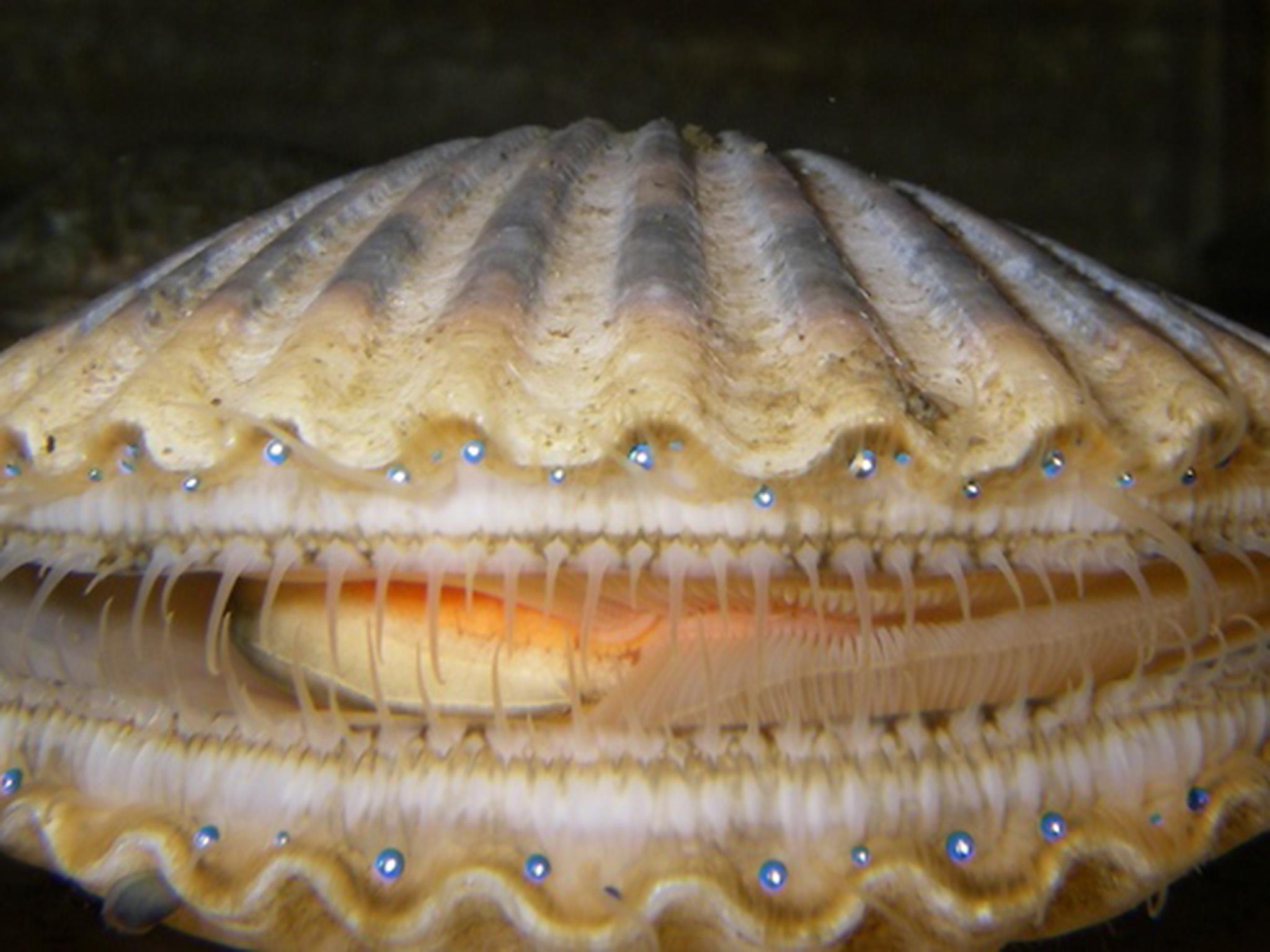How scallops are able to see with hundreds of space-age eyes
For years, scientists thought scallops could see some things, but now, with more powerful microscopes, it's clear they see far more

Support truly
independent journalism
Our mission is to deliver unbiased, fact-based reporting that holds power to account and exposes the truth.
Whether $5 or $50, every contribution counts.
Support us to deliver journalism without an agenda.

Louise Thomas
Editor
It’s hard to see what’s so special about a scallop. It looks a lot like a clam, mussel or any other bivalve. Inside its hinged shell lurks a muscle-bound creature that’s best enjoyed seared in butter.
But there’s something more to this ubiquitous entree: The scallop sees its world with hundreds of eyes. Arrayed across the opening of its shell, the eyes glitter like an underwater necklace. Each sits at the tip of its own tentacle and can be extended beyond the rim of the shell.
While some invertebrate eyes can sense only light and dark, scientists have long suspected that scallops can make out images, perhaps even recognising predators quickly enough to jet away to safety. But scallop eyes – each about the size of a poppy seed – are so tiny and delicate that scientists have struggled to understand how they work.
Now, a team of Israeli researchers has had a look at the hidden sophistication of the scallop eye, thanks to powerful new microscopes. On Thursday, they reported in the journal Science that each eye contains a miniature mirror made up of millions of square tiles. The mirror reflects incoming light onto two retinas, each of which can detect different parts of the scallop’s surroundings.
But no one knew how the mirror worked, or why scallops needed two retinas when other animals need only one.
Benjamin Palmer, a postdoctoral researcher at the Weizmann Institute of Science in Israel, and his colleagues recently used a powerful new tool known as a cryo-electron microscope to look at scallop eyes.
He and his colleagues froze slices of the eyes, making it possible to inspect the tissue down to its fine molecular details. (In October, three pioneers of cryo-electron microscopy won the 2017 Nobel Prize in chemistry.)
Researchers have long known that the mirror in a scallop eye is made from a molecule called guanine. It’s best known as one of the main ingredients of DNA, but in some animals guanine is packed into crystals that reflect light.
Some fish have a silvery tint to their scales thanks to guanine crystals. Chameleons use guanine crystals to help them change the colour of their skin. But no one knew how guanine helped scallops to see.
Using cryo-electron microscopes, Palmer and his colleagues discovered that scallops make a kind of guanine crystal never seen before in nature: A flat square. “We were amazed,” he says. “We knew this would be something cool.”
The researchers found that the mirrors are made of 20 to 30 layers of guanine, each containing millions of squares that fit together snugly like tiles on a wall.
“To see that square tiling is completely new,” says Daniel I Speiser, a visual ecologist at the University of South Carolina, who was not involved in the study.
Palmer and his colleagues took X-rays of the scallop eyes to determine that these layers form a flat-bottomed bowl. The scientists created a computer model of the entire eye based on these findings, allowing them to trace the paths that light took as it bounced off the mirror.
Paradoxically, the guanine squares don’t reflect light on their own – they’re transparent. But their arrangement turns them into a collective mirror.
The layers of tiles are separated by thin layers of fluid, and as a ray of light passes through them, it gets bent further and further from its original direction. Eventually the light gets turned completely around, heading back towards the front of the eye.
This arrangement is well suited for underwater vision, the researchers found, because it is better at bouncing back some colours of light than others. “You have a mirror that basically reflects 100 per cent of the blue light it receives,” Palmer says. “It makes a lot of sense that it reflects all the light it has in its environment.”
The model created by Palmer and his colleagues may also solve the mystery of the two retinas. The researchers found that each retina receives sharply focused light from different parts of the animal’s field of view.
One retina can create a sharp image of what’s right in front of the eye. The other retina gives a better view of the periphery.
Palmer speculated that scallops might use each retina to face a different challenge in their lives.
The retina that sees the central field of view might allow scallops to quickly recognise oncoming predators, allowing them to beat a hasty retreat by swimming away.
Scallops may pay attention to their peripheral vision instead when they’re searching for a spot on the sea floor where they can settle down to feed.
© New York Times
Subscribe to Independent Premium to bookmark this article
Want to bookmark your favourite articles and stories to read or reference later? Start your Independent Premium subscription today.
Join our commenting forum
Join thought-provoking conversations, follow other Independent readers and see their replies
Comments